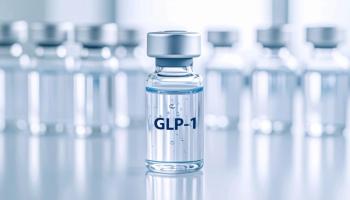
Study: Aromatase Inhibitors Beat Tamoxifen at Cutting Risk of Some Breast Cancer Recurrence
New study results show that the drugs, which block estrogen production, are more effective for premenopausal and postmenopausal women.
Giving aromatase inhibitors instead of tamoxifen to premenopausal women with estrogen-receptor-positive, or hormone-sensitive, breast cancer significantly reduces the risk of breast cancer recurrence, according to the results of a study published in The Lancet Oncology.
For women with hormone-sensitive, operable breast cancer, giving tamoxifen treatment after surgery reduces the risk of dying from breast cancer within 15 years by approximately one-third.
Aromatase inhibitors, which block estrogen production, are even more effective than tamoxifen in postmenopausal women, reducing the risk by a further 30%.
However, for premenopausal women, aromatase inhibitors are ineffective, because the ovaries respond by increasing estrogen production. This problem may be overcome by using treatments that suppress ovarian function, such as drug therapies or surgeries.
Investigators from the Early Breast Cancer Trialists’ Collaborative Group (EBCTCG) combined all the available evidence to answer this question, because data from individual trials had been inconclusive. The EBCTCG is based at Oxford Population Health at University of Oxford and is primarily funded by Cancer Research UK.
Investigators combined data from 4 large-scale randomized controlled trials, which involved a total of more than 7000 women with early-stage breast cancer from around the world.
In the trial, each woman had received an ovarian suppressing treatment. Additionally, they were randomly allocated to take an aromatase inhibitor or tamoxifen for 3 or 5 years.
Over a median follow up period of 8 years, the investigators looked for differences between the 2 groups in breast cancer recurrence and deaths from breast cancer or any cause.
Of the study population, 12.6% of women had a breast cancer recurrence. There were 418 deaths, with 54 from causes unrelated to breast cancer.
Additionally, in women receiving ovarian suppression therapy, breast cancer recurrence was significantly reduced in the group that had received aromatase inhibitors instead of tamoxifen. Overall, the risk was reduced by an average of 21%.
The main benefit was seen in the first 5 years, when the treatments differed, where the risk of recurrence was approximately 32% lower in the aromatase inhibitor group. The absolute reduction in the risk of recurrence was approximately 3.2%, with approximately 6.2% in the aromatase inhibitor group and approximately10.1% in the tamoxifen group.
There was no further benefit or loss benefit between 5 to 10 years.
Aromatase inhibitors were just as effective in women under aged 35 years, who have a higher risk of recurrence than older women.
Additionally, there was no apparent difference in the number of deaths from breast cancer or any cause. However, the survival benefits from aromatase inhibitors may became more apparent after a longer period of follow-up.
The known adverse effects of aromatase inhibitors include an increased risk of osteoporosis, which can cause bone fractures. In this analysis, a slightly higher proportion of women in the aromatase inhibitor group had a bone fracture over the follow-up period at 6.4% compared with the tamoxifen group at 5.1%.
However, the frequency of bone fractures was low overall, and this can be mitigated through treatment with drugs that help strengthen bones, such as bisphosphonates.
Tamoxifen can increase the risk of endometrial abnormalities, including endometrial cancers and uterine polyps. Additionally, the 5-year incidence of endometrial cancer was higher in the tamoxifen group at approximately 0.3% compared with approximately 0.2% in the aromatase inhibitor group, though the occurrence was still rare overall.
Reference
Aromatase inhibitors are better than tamoxifen at reducing the risk of breast cancer recurrence in premenopausal as well as postmenopausal women. EurekAlert. News release. February 3, 2022. Accessed February 4, 2022. https://www.eurekalert.org/news-releases/942297
Newsletter
Stay informed on drug updates, treatment guidelines, and pharmacy practice trends—subscribe to Pharmacy Times for weekly clinical insights.

















































































































































































































